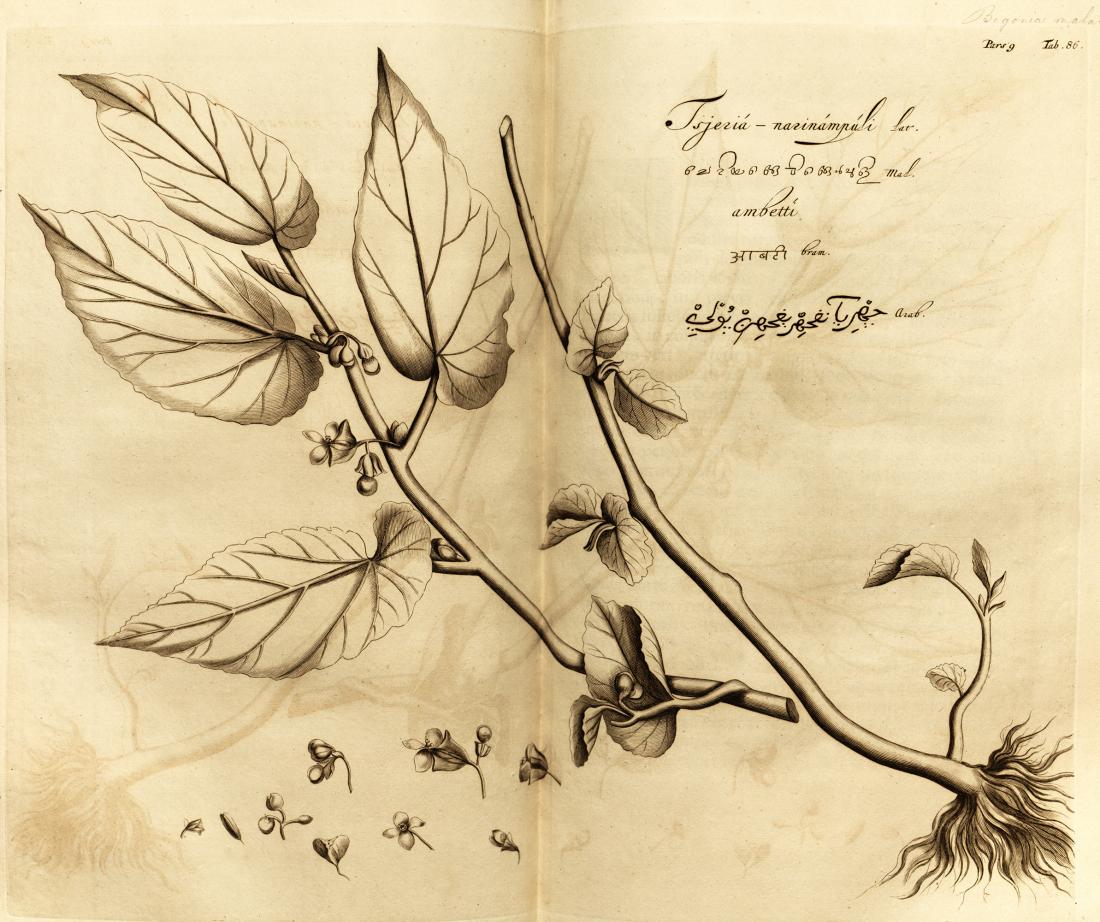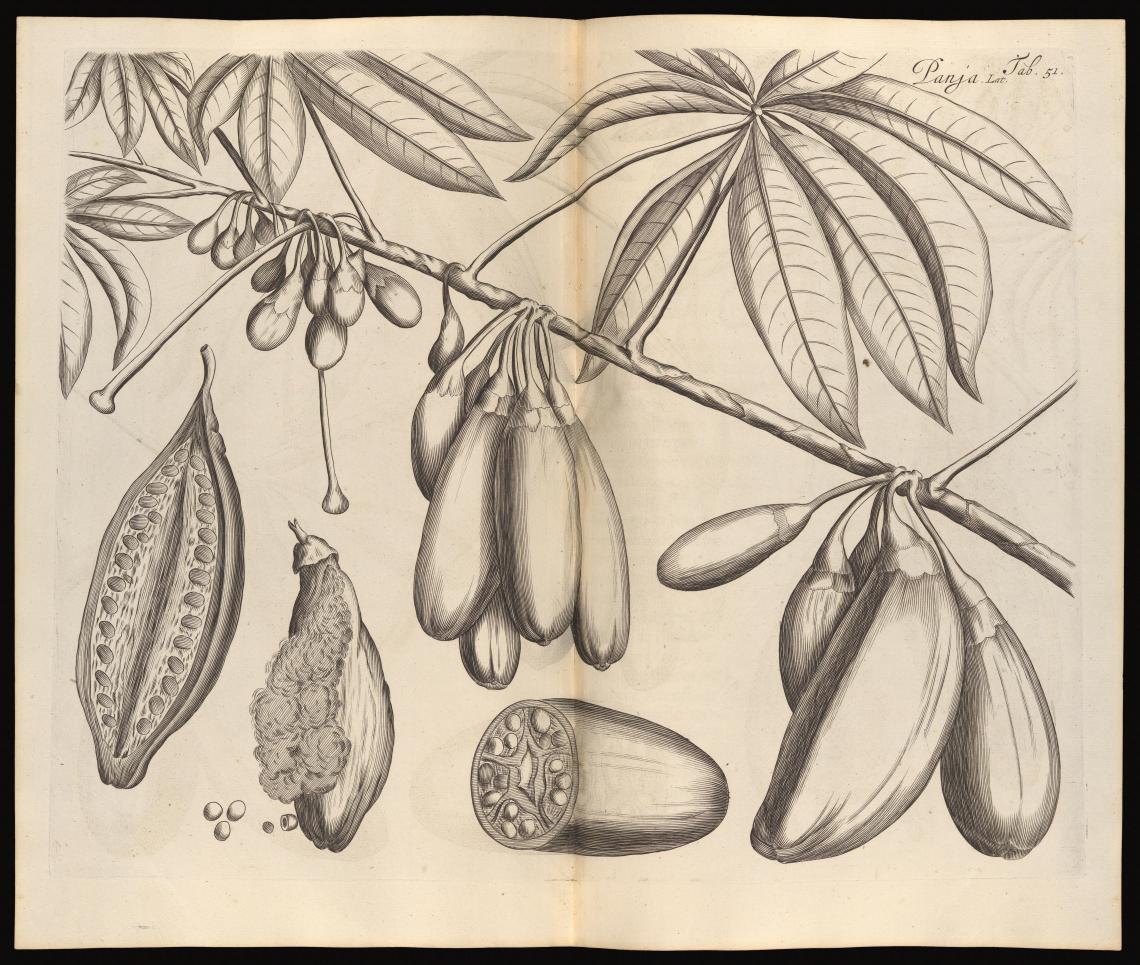Gravure Taille-Douce d’un Bégonia from the Hortus Malabaricus, Hendrik van Reede tot Drakestein, c. 1689–1690.
Published in 1693, the Hortus Indicus Malabaricus offers a curious glimpse into the history of medical and natural sciences. It is simultaneously a medicinal treatise, an ethnographic survey and a compendium of indigenous knowledge.
The book, running into 12 volumes, each with nearly 500 pages and a total of 794 copperplate engravings, was undertaken by Hendrik van Rheede, then-Governor of Malabar for the Dutch East India Company, in 1678. The reasons behind his undertaking were plenty, springing partly from an economic interest in bypassing Arab traders who sourced the medicinal ingredients for the company's soldiers, partly out of Rheede’s own inclinations and partly because of the ready availability of skilled personnel.
The exquisitely illustrated book gives a detailed account of the flora of the Malabar region. While it is written in Latin, each plant is identified with its vernacular names in Sanskrit, Arabic and Malayalam. With its encyclopedic ethnomedical knowledge, the book presents the first comprehensive account of tropical botany in South Asia. Written well in advance of Carl Linnaeus’s Species Plantarum (1753), which laid the foundation of modern botanical taxonomy, it served as the primary source for Linnaeus’s account and yielded the addition of over 200 genera and species of tropical flora. The text also became one of the earliest repertoires of knowledge for those interested in studying South Asia’s botany.
Hortus Indicus Malabaricus, Henricum van Rheede, van Draakenstein [sic] et Johannem Casearium, c. 1689–1690.
The text was compiled over 30 years and published posthumously in Amsterdam. An international project spread out over decades, at its inception, Rheede was assisted by a team of Indian physicians, amateur botanists, technicians, illustrators, engravers, company officials, clergymen, the King of Cochin and the ruling Zamorin of Calicut. Itty Achuden, a medical practitioner from the Ezhava tradition, was central to the enterprise and culled information from palm-leaf manuscripts, which was then verified by three Tulu brahmins — Ranga, Vinayaka and Appu Bhatta. This mass of information was collected not only through expeditions from the Western Ghats to Kanyakumari, but also heavily consulted ancient palm-leaf manuscripts.
Rheede also worked with botanist and doctor Paulus Hermann and several European artists who travelled with him. Recording the plants such that they best illustrated their likeness was crucial, since none of these plants could have been taken on long voyages. Consequently, European artists worked with their Indian assistants to produce the drawings in the manuscript. These were then converted into copperplate engravings, which were then mechanically reproduced as postcards and prints. In addition to recording a key episode in the history of botanical and medicinal sciences, this manuscript also records the first time the Malayalam script was printed.
Within India, there has been an interest in the reverse-extraction of its knowledge of Ayurvedic and pre-Ayurvedic (Ezhava) medical traditions. Translations of the book in English and Malayalam were published by the University of Kerala in 2003 and 2008, respectively, led by the botanist KS Manilal. Most recently, the government of Goa commissioned the University of Goa to translate the book into Konkani.
This article first appeared in the MAP Academy Encyclopedia of Art.
The MAP Academy is a non-profit online platform consisting of an Encyclopedia of Art, Courses and a Blog, that encourages knowledge building and engagement with the visual arts and histories of South Asia. Our team of researchers, editors, writers and creatives are united by a shared goal of creating more equitable resources for the study of art histories from the region.




